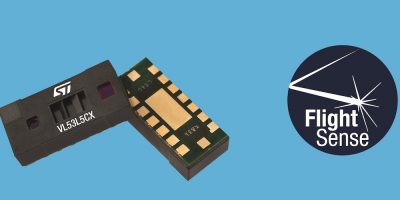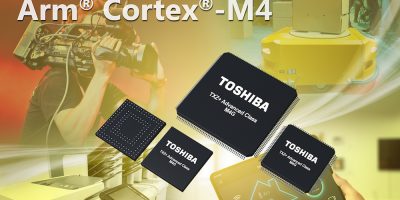Distance sensing takes on new scope with the first multi-zone FlightSense time of flight (ToF) sensor from STMicroelectronics. The VL535CX also has up to 64 sensing zones (8×8) and can be used gesture recognition and complex scene analysis as well as for general purpose applications in the consumer and industrial markets.
The VL53L5CX’s multiple sensing zones offer multi-target detection, distance measurement up to four meters in each zone, and a wide square-edged field of view with 63 degrees diagonal. The sensor can be used for gesture recognition and complex scene analysis including 3D room mapping for robotics, storage-tank level monitoring to assist in inventory management, liquid-level control, and waste-bin-level monitoring used in smart refuse collection.
By supporting gesture recognition and automatic human-presence detection, the VL53L5CX enables safe, touch-free operation and saves power when used for waking-up publicly accessible equipment such as self-service payment terminals, and a variety of IoT-enabled, smart consumer products and domestic appliances. The sensor uses ST’s proven histogram processing which reduces the impact of cover-glass crosstalk. As a result, the sensor can be integrated and hidden behind front panels. A motion-indicator allows the sensor to detect if the target has moved or not.
The number of sensing arrays is programmable and the sensor can provide up to 60 frames per second in 16-zone (4×4) mode for fast-ranging mode. Simple software configuration enables it to reach high resolution of 8×8 zones. This is particularly useful to assist keystone correction for video projectors, for example, and provides a mini depth-map for augmented reality and virtual reality (AR / VR) applications.
The VL53L5CX contains a low power microcontroller and is capable of autonomous operation to conserve energy in power-saving applications. It is supplied in an integrated 6.4 x 3.0 x 1.5mm module that contains an infra red vertical cavity surface emission laser (VCSEL) emitter and a receiver with embedded single-photon avalanche diode (SPAD) and histogram-based ToF processing engine.
For prototyping, ST provides an evaluation and calibration tool. Development boards designed to integrate easily into larger prototype systems are also available. There is also the P-NUCLEO-53L5A1 evaluation kit and X-CUBE-TOF1 software expansion pack to develop ToF applications.
All parts are in production now.







